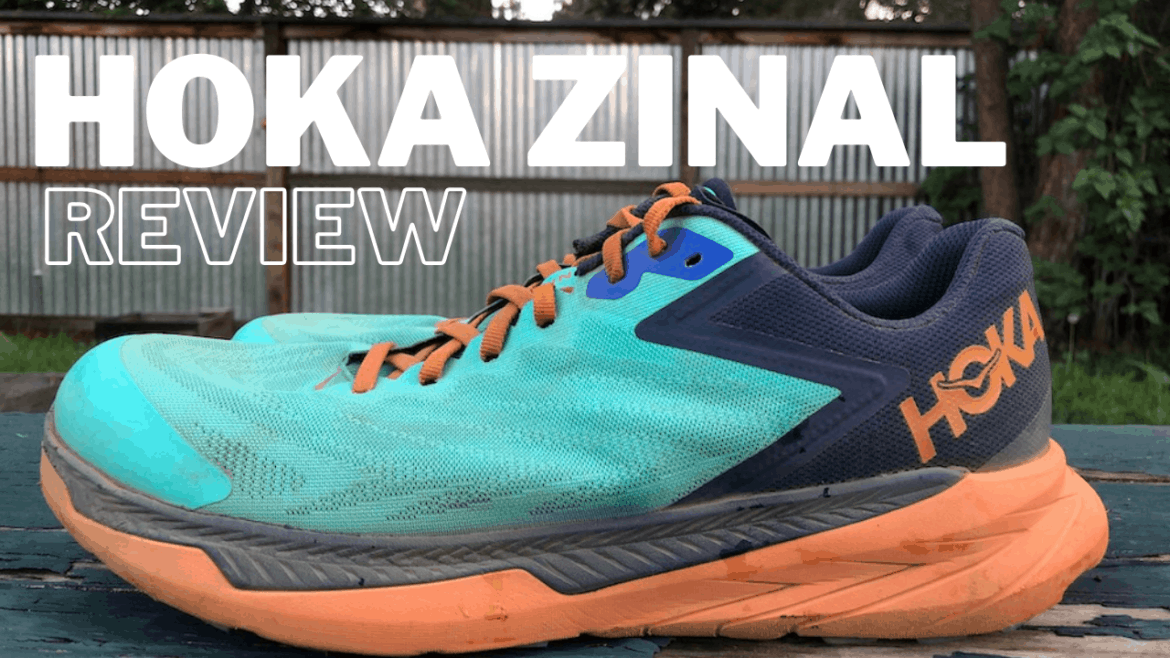Hoka Zinal Shoe Review | Light & Fast!
by Chase Parnell — August 20, 2021
Well well well, coming at you with a new shoe review. I don’t do a lot of these but every once in awhile, if it’s a product I’m genuinely excited about, I’ll muster the energy required to nerd out on shoe tech/features/hype/nonsense for long enough to compile a worthy review. I’m actually not the best shoe reviewer because if I’m being honest, in general, I’m not that hard to please when it comes to shoes! All I really need is for a shoe to be comfortable enough to not be annoying and I need it to not injure me. Because that’s how it works right? You get injured not because you overtrain, do stupid things like try to sprint, no, it’s the shoe, it’s always the shoe. I’ve essentially spent the last decade in three shoes, with the occasional one-off purchase here and there. First it was the Montrail Bajada, then the Pearl Izumi N2, and now the Hoka Torrent. I ran through 10-20 pairs of each of these shoe models.
To be clear, I have no intention of replacing the Torrent with the Zinal as my day-to-day trainer but I am very stoked to integrate the Zinal once or twice a week on high-intensity intervals, tempo sessions, or when I just need a little added motivation to get out the door. Before I jump into the the full break-down of the outsole, midsole, and upper, if I were to devise a one-liner to pigeon-hole the Zinal it would be this: it’s a lightweight versatile trail shoe most suitable for smooth to moderately technical trails.
Okay, now let’s get into the nitty gritty.
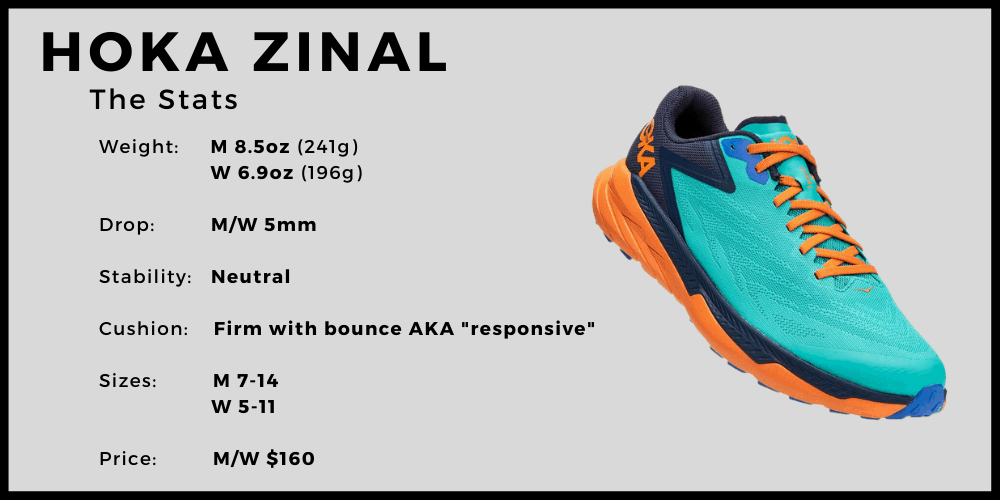
Hoka Zinal Outsole
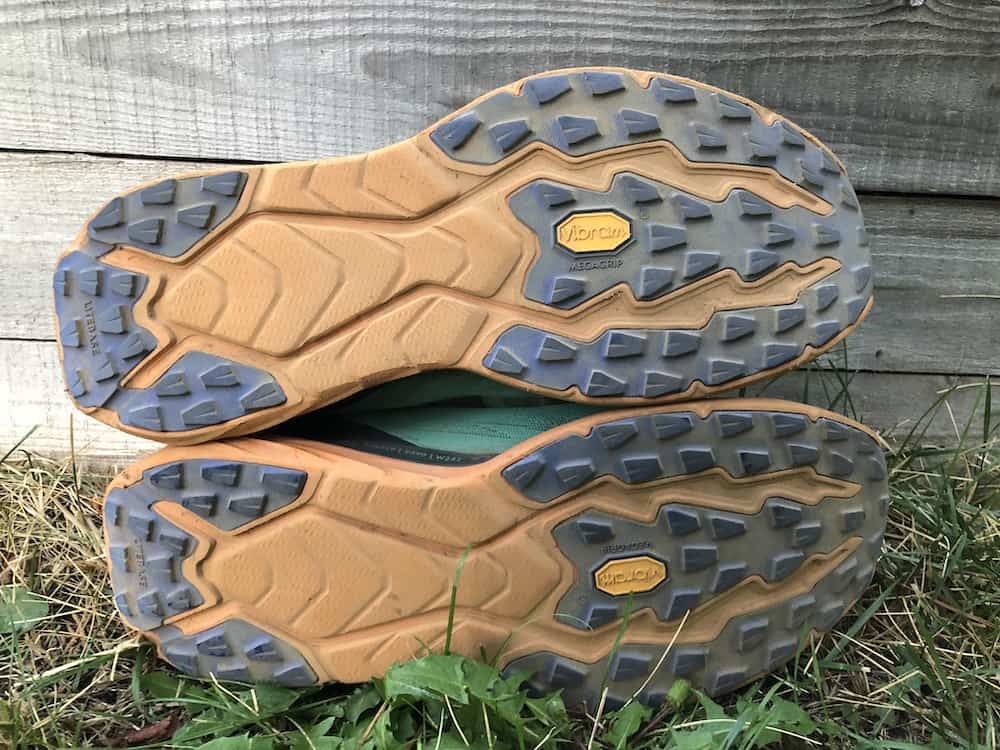
A long time ago Vibram established itself as the stickiest most durable rubber brand in footwear, whether or not this is in fact true, I have no idea. But the Vibram logo on any outsole still seems to carry weight and the Zinal reps it proudly. The outsole has 4mm multi-directional traction lugs on the heel and forefoot with foam throughout the middle where lugs aren’t as essential. I’ve taken it out on a variety of terrains, from buffed out bomber singletrack to steeper rocky more technical descents and have been very pleased. It’s worth noting that the security I feel in the shoe is a result of a combination of factors: the sticky outsole, the secure low-profile platform, and the form fitting upper really give me about as much confidence as can be had by shoe tech.
On the Vibram website they say about the proprietary megagrip, “Vibram Megagrip is the high performance rubber compound that offers unparalleled grip properties on both dry and wet terrains. […] It gives you confidence and control, while maintaining an optimal balance between stability and flexibility for ground adaptation.” This balance between stability and flexibility is key. They don’t overdo the rigidity or firmness of the lugs like some euro-brands out there. Because as much as we hate to admit it, Americans typically run on more gradual buffed out trails designed with long switch-backs for mountain bikes and less strenuous hiking. It’s not the Alps, we don’t just go straight up and down steep slopes, we aren’t off-trail a ton, and while we do scramble a bit within the trail running culture it’s not like the fells or the Alps where they need really aggressive tread and a certain rigidity to the outsole to stay vertical.
The Zinal outsole strikes a really nice balance, with enough tread and flexibility to run both safely and comfortably. No complaints from me!
Hoka Zinal Midsole
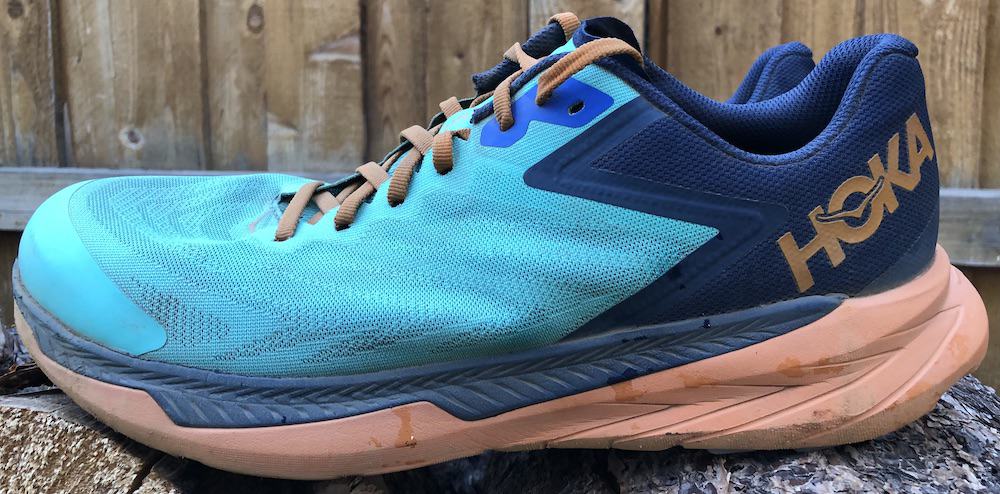
Okay, Hoka is very clear in their marketing that this is a shoe for shorter distances. They don’t say how short is short of course because they wouldn’t want to alienate a market segment unnecessarily, but I understand the general sentiment after taking this shoe out for a dozen runs or so. This isn’t a 100 mile shoe but I could see running a fast 50k in it for sure. I don’t think I would go any further than that, although you certainly could if you’ve got the right mechanics and genetic makeup. I’ve had too many lower leg and foot injuries to play around in that department.
The Zinal specs describe the cushion platform as low profile, which essentially just means that there isn’t as much of a layered crash pad to absorb the impact. If they didn’t say that, I honestly probably wouldn’t have even noticed. I really like the “responsive” cushioning, you do feel a nice little rebound effect with each foot strike, and I don’t notice any sacrifice in comfort to obtain it. Additionally, with the lower profile midsole you also notice a certain stability on whatever surface you’re running on. I don’t know about you but the higher the stack height the more of an ankle breaker I consider the shoe. Easy to roll an ankle if you’re burning turns on giant soft-cushioned platforms (no offense to some of Hoka’s heritage models).
One thing I’ll say here: don’t do what I did and take the shoe straight to a group speed workout on the first run! It all felt great during the session itself but then the next day I noticed that my plantar fascia was slightly tight. I think that’s because I hadn’t broken in the shoe and settled into the cushioning of the heel and forefoot, which naturally supports the arch and likely would’ve saved me from that minor scare.
In general, really great midsole. And despite the lower profile I get the sense that it’s going to last because of the slightly firmer (responsive) ride. Writing this reminds me of the old Nike Pegasus. When I worked at a running shoe store that model always had the best “out of the box” feel for customers because it was just so nice and soft and plush. And did I tell them that that feeling likely wasn’t going to last beyond, say, 50 miles? Err, no, not usually. I should have! All that to say, give the Zinal a few runs before deciding if you need a more cushioned shoe and remember that the out of box feel is not always the best indicator of comfort over the entire life of a shoe.
Hoka Zinal Upper
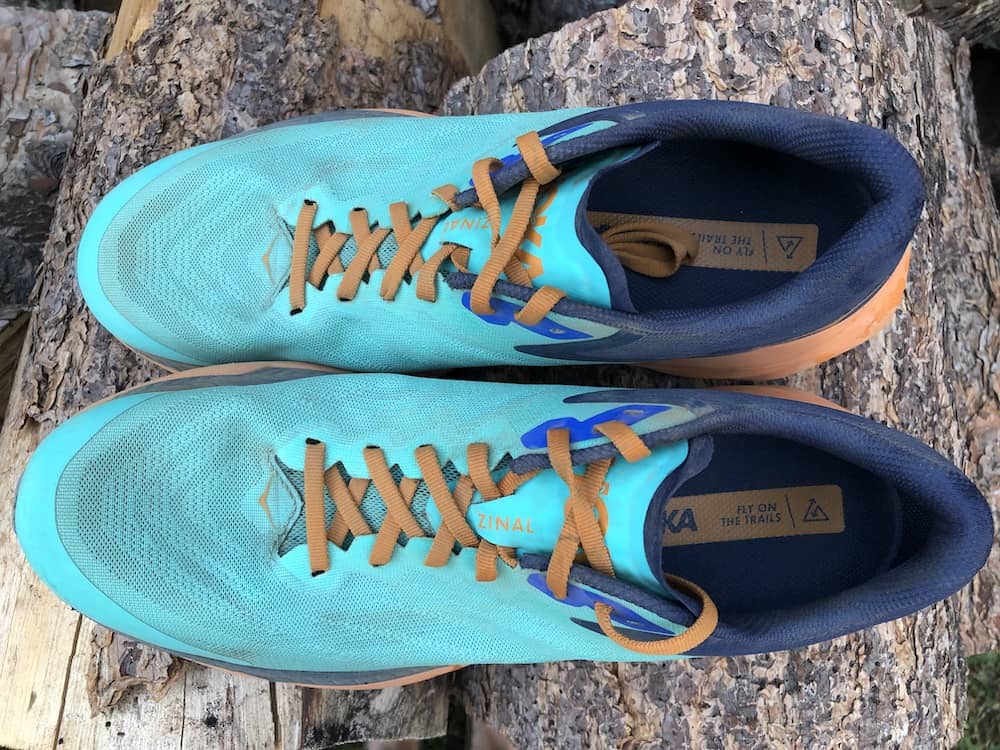
The upper is always the crux for me. I have a long narrow foot, not like freakishly narrow or anything, but there are some shoes that just do not work for me. The Zinal fit like a glove right when I tied it up for the first time. Everything secured into place and I didn’t have to synch the laces to the point where the eyelets were touching. But don’t let that throw you off, I do think this shoe can also work for a wider footed person as well, it just wasn’t a non-starter for me as a narrow footed human.
So far, no weird rubs or hot spots on the feet. No tears in the material or structural concerns. I have a friend who was recently ragging on the Hoka Speedgoat for durability issues; he loves them but just doesn’t get a lot of miles out of them. I have never felt that way in the Torrent 1 or 2 and I can already tell that’s not going to be an issue in the Zinal. They are holding up very well.
A couple other comments about this upper: there is some substantial material to the heel collar, a form fitting adaptable support that nestles up to the achilles tendon. I appreciate this feeling of security, especially on the achilles. The shoe has a minimalist tongue, thin. Might as well shed the weight! Sometimes this can create a sensation like the laces are digging into the top of your foot, but I haven’t experienced that. There isn’t a rock plate in the shoe but there is a protective toe bumper, which I can appreciate after stubbing toes on innumerable roots and rocks over the years. And lastly, the mesh used in the upper comes from recycled materials and that’s always a good thing, a little cherry on top to help you sleep at night.
Hoka Zinal Overall Impressions and Take-Aways
Perhaps the only little bummer about the Zinal is the price. Enter whiney cheap consumer syndrome. It’s $160. No matter how you slice it, that’s an expensive shoe, especially for a lighter shoe that in theory may not last quite as long as the Speedgoat or Torrent. But then again, the Zinal is a sick shoe and provides real value! For instance, if you have a trail half marathon coming up and you want to feel light and fast for your race, you might not think twice about $160. Honestly, I’ve never really understood shoe pricing; the Torrent 2 is $120, which is far more palatable for me personally, especially if I’m going through six to eight pairs a year! Why the bump up to $160 for the Zinal? I don’t know, they probably have a whole team of full time employees who spend their days making these decisions.
All in all, this is a great addition to the Hoka trail shoe line! I really like having a lighter shoe option in the quiver to spice things up. I also think it’s good for your physiology to not get too too comfortable in just one model of shoe. Having the Zinal to pull out once or twice a week will hopefully strengthen some areas of the foot that have long been neglected while running exclusively in the Torrent. For kicks, here’s a quick run-down of the weights of the Hoka trail bestsellers:
- Zinal — M/W 8.5oz/6.9oz
- Torrent 2 — M/W 9.3oz/7.6oz
- Challenger ATR 6 — M/W 9.8oz/8.1oz
- Speedgoat 4 — M/W 10.8oz/9.2oz
I’m at the point where I essentially will not buy a shoe over 10 ounces. Just personally, that threshold is where I feel like I start to notice the heaviness of a shoe, but everyone is different in that regard. I’ve never run in the Speedgoat for that reason! I’m probably missing out because many of my friends love that shoe but for some reason the Torrent is right in my sweet spot. And now I have something even lighter in the Zinal! Feels good.
Okay, there you have it! I hope this review provided some value for you in your search for your next shoe! It’s definitely something special when you find the right fit, that’s for sure. I think you can trust the Zinal with the right applications. Head into your local running shop or pick up a pair direct from Hoka here: Men’s / Women’s.
Find this helpful? Sign up for our free weekly Rise & Grind Newsletter to stay in the loop! You can also support us via Patreon by chipping in as little as $2 a month. We appreciate your support!


